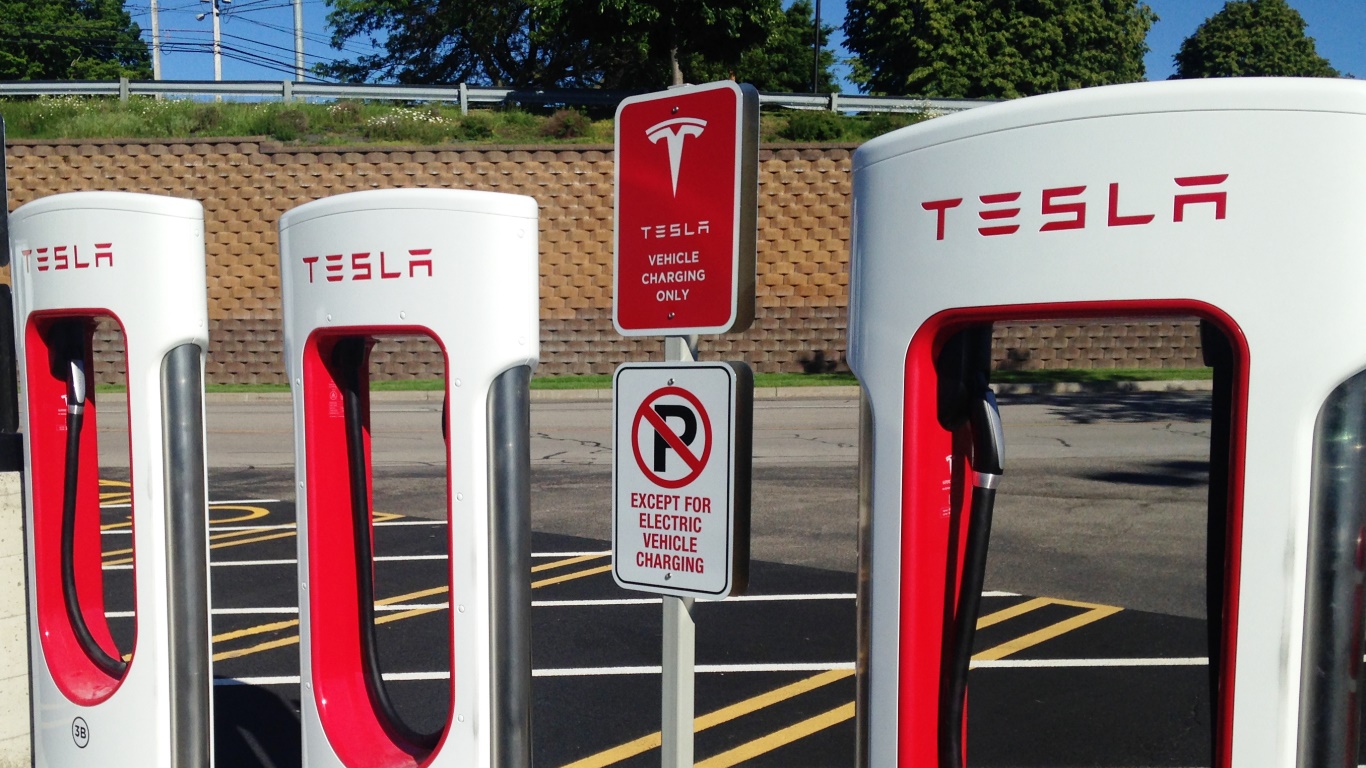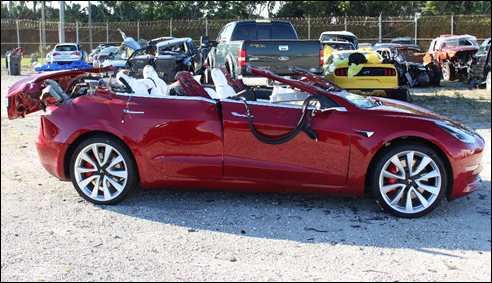Cars and Drivers
Preliminary NTSB Report Discusses Tesla Autopilot in Fatal Accident From March

Published:
Last Updated:

Tesla Inc. (NASDAQ: TSLA) is having another day where the Tesla Autopilot driver assistance system is being highlighted around a prior fatal car accident. There remain many questions around just how much of an “auto-pilot” this system is versus an assistance system to some drivers. This preliminary report also comes at a time shortly after founder and CEO Elon Musk has been talking up autonomous and self-driving vehicles being available as soon as late in 2020.
The National Transportation Safety Board Organization (NTSB) issued a release on Thursday detailing the events of a fatal car accident on Friday, March 1, 2019 involving a Telsa Model 3 electric vehicle. The accident took place at roughly 6:17 a.m. local time on US 441 in Delray Beach, Palm Beach County, Florida.
According to the NTSB’s preliminary release, which is not yet a complete investigation and may of course change, the 2018 Tesla Model 3 electric-powered passenger vehicle struck a truck-tractor in combination with a semitrailer from the side. The posted speed limit was 55 mph, and the Tesla was reported to be traveling at 68 mph. The NTSB’s preliminary report shows that the fatal accident took place only seconds after the Tesla Autopilot system had been engaged and that neither the driver nor the system made an evasive maneuvers to avoid the accident.
The NTSB’s preliminary report did specify that it is continuing to gather information on the operation of the Tesla’s ADAS and the Tesla driver’s actions leading up to the crash. The investigation is ongoing and was said to also be examining the driver of the combination vehicle, the motor carrier, highway factors, and survival factors to determine the probable cause. The NTSB also has an intent to issue safety recommendations to prevent similar crashes as it works with the Palm Beach County Sheriff’s Office during the investigation.
The NTSB’s description of the accident said:
As the Tesla approached the private driveway, the combination vehicle pulled from the driveway and traveled east across the southbound lanes of US 441. The truck driver was trying to cross the highway’s southbound lanes and turn left into the northbound lanes. According to surveillance video in the area and forward-facing video from the Tesla, the combination vehicle slowed as it crossed the southbound lanes, blocking the Tesla’s path.
The Tesla struck the left side of the semitrailer. The roof of the Tesla was sheared off as the vehicle underrode the semitrailer and continued south (figure 2). The Tesla came to a rest on the median, about 1,600 feet from where it struck the semitrailer. The 50-year-old male Tesla driver died as a result of the crash. The 45-year-old male driver of the combination vehicle was uninjured.
Preliminary data from the vehicle show that the Tesla’s Autopilot system—an advanced driver assistance system (ADAS) that provides both longitudinal and lateral control over vehicle motion—was active at the time of the crash. The driver engaged the Autopilot about 10 seconds before the collision. From less than 8 seconds before the crash to the time of impact, the vehicle did not detect the driver’s hands on the steering wheel. Preliminary vehicle data show that the Tesla was traveling about 68 mph when it struck the semitrailer. Neither the preliminary data nor the videos indicate that the driver or the ADAS executed evasive maneuvers.
Tesla’s stock has been reacting less on bad news events around crash and accident news events, and this NTSB report was roughly 75 days after the accident. Still, Tesla shares were last seen down about 1.25% at $229.05 on a day that the Dow, Nasdaq and S&P 500 were all up about 1% on average. Tesla’s trading volume of less than 5.5 million shares with about 90 minutes until the market’s closing bell is also far lighter than an average 10.2 million shares trading on an average day. Tesla’s stock has a range of $224.50 to $387.46 over the last 52-weeks.
This accident also took place before Tesla raised $2 billion and was long before its latest earnings and guidance.
Other headlines covering this accident were seen as follows:

The thought of burdening your family with a financial disaster is most Americans’ nightmare. However, recent studies show that over 100 million Americans still don’t have proper life insurance in the event they pass away.
Life insurance can bring peace of mind – ensuring your loved ones are safeguarded against unforeseen expenses and debts. With premiums often lower than expected and a variety of plans tailored to different life stages and health conditions, securing a policy is more accessible than ever.
A quick, no-obligation quote can provide valuable insight into what’s available and what might best suit your family’s needs. Life insurance is a simple step you can take today to help secure peace of mind for your loved ones tomorrow.
Click here to learn how to get a quote in just a few minutes.
Thank you for reading! Have some feedback for us?
Contact the 24/7 Wall St. editorial team.